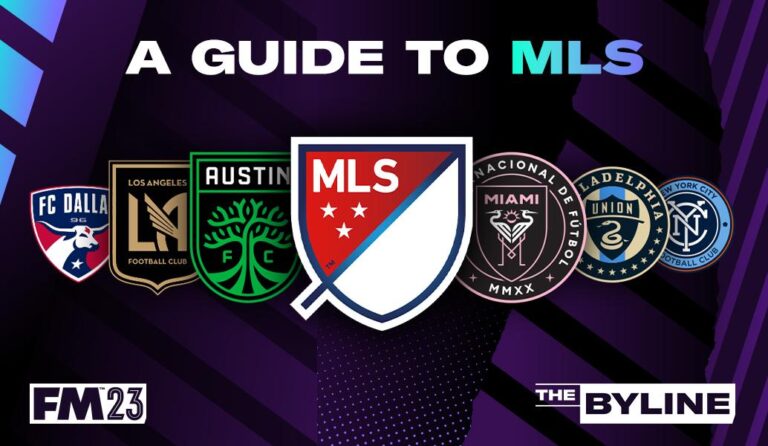As Major League Soccer continues its rapid ascent in the global football landscape, a remarkable milestone is imminent: the league’s overall valuation is set to surpass that of Brazil’s prestigious Serie A. Despite the historic significance of this shift, it’s largely slipping under the radar both within the sports world and mainstream media. This article explores how MLS’s financial growth reflects broader trends in soccer’s globalization, the factors driving its rising worth, and what this means for the future of football in the Americas.
MLS Surges Past Brazil’s Serie A in Market Value Highlighting US Soccer’s Rapid Growth
The latest figures reveal a striking shift in the global soccer landscape as Major League Soccer (MLS) has outpaced Brazil’s Serie A in total market value. This milestone not only reflects the strategic investments and growing fanbase in the United States but also highlights the increasing appeal of the American league to international talent and sponsors. While Serie A continues to be a breeding ground for elite South American prospects, MLS’s financial muscle signals a new era where North American soccer commands significant influence in the global marketplace.
Key drivers behind MLS’s rapid growth include lucrative broadcast deals, expanding stadium infrastructure, and an influx of high-profile players and coaches. Notably, MLS clubs have enhanced their commercial revenues by tapping into diverse revenue streams such as:
- International broadcasting rights
- Sponsorship agreements with global brands
- Growing matchday attendance and merchandise sales
- Strategic youth academies producing homegrown talent
This financial momentum is captured in the following comparative snapshot of league market values:
| League | Market Value (Billion USD) | Growth Rate (YoY) |
|---|---|---|
| MLS | $3.1 | +12% |
| Brazil’s Serie A | $2.9 | +4% |
Economic Impact and Sponsorship Deals Fueling MLS Expansion Beyond Expectations
The rapid economic growth of MLS has exceeded projections, driven largely by a surge in high-profile sponsorship agreements and a burgeoning fan base that continues to attract global brands. Recent deals with multinational companies have injected unprecedented capital into the league, fueling investments in stadium infrastructure, player acquisitions, and youth development programs. This financial boost has not only enhanced the quality of play but also positioned MLS as a serious competitor on the global soccer stage, drawing comparisons with Latin America’s historically dominant leagues.
Key factors fueling this expansion include:
- Record-breaking media rights contracts providing steady revenue streams
- Strategic partnerships with tech giants and lifestyle brands expanding audience reach
- Localized sponsorships empowering MLS franchises to build stronger community ties
| Revenue Source | 2022 ($M) | 2023 ($M) | % Growth |
|---|---|---|---|
| Media Rights | 120 | 190 | 58% |
| Sponsorship Deals | 85 | 130 | 53% |
| Matchday Revenue | 60 | 90 | 50% |
Strategic Recommendations for Brazilian Clubs to Compete in the Global Football Economy
To reclaim their position in the escalating global football economy, Brazilian clubs must embrace innovative commercial strategies tailored to international markets. Prioritizing global brand partnerships and digital content monetization could open new revenue streams previously dominated by European and now North American leagues. Expanding youth development programs with a focus on talent export-not just local retention-can position Brazilian teams as indispensable suppliers in the global transfer market. Furthermore, integrating advanced sports analytics and performance technologies will help clubs retain top talent longer and increase their competitive value on the international stage.
Operational excellence should go hand-in-hand with expanded marketing efforts, particularly by leveraging social media to connect with diaspora communities and global football fans. Clubs need to diversify income beyond matchday revenues by cultivating eSports divisions and merchandising that rivals MLS’s innovative approaches. Below is a snapshot comparison of key strategic areas where Brazilian clubs can accelerate growth:
| Strategic Area | Brazilian Clubs | MLS | Opportunity |
|---|---|---|---|
| Commercial Partnerships | Local & Regional | Global Brands | Expand International Deals |
| Youth Development | Export Focus + Retention | Export with Long-Term Contracts | Balance Export & Growth |
| Digital & Media Rights | Primarily Domestic | Global Distribution | Increase Global Streaming |
| Fan Engagement | Traditional Methods | Innovative Digital Platforms | Deploy Tech-Driven Fan Tools |
The Way Forward
As Major League Soccer steadily climbs the ranks of global football valuations, surpassing Brazil’s premier league is more than a financial milestone-it signals a shifting landscape in the sport’s traditional power centers. While this development has largely flown under the radar, its implications for player movement, sponsorship deals, and competitive dynamics are profound. Observers and stakeholders alike would do well to pay closer attention as MLS continues to redefine its place on the world football stage.




